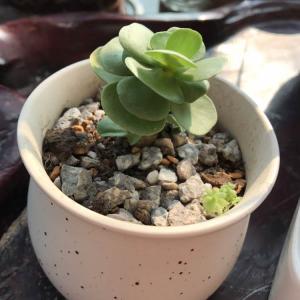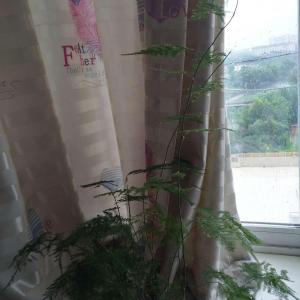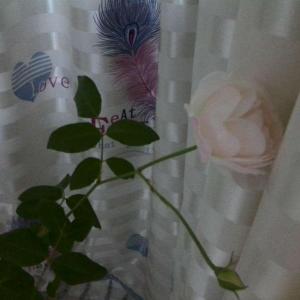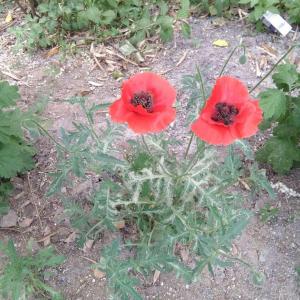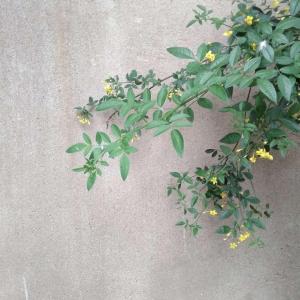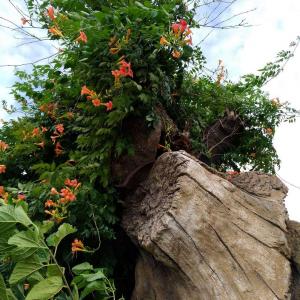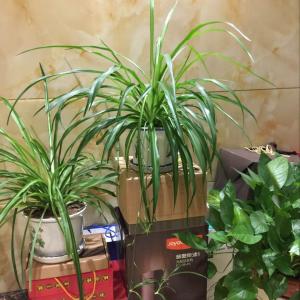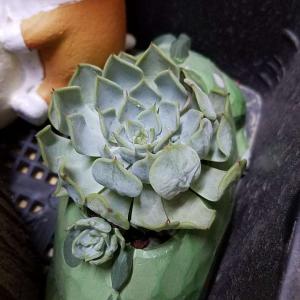文章
Miss Chen
2017年08月02日


Tres opciones en cuanto a sustratos para macetas de cactus y crasas:
1. Tierra para cactus
Si no te quieres complicar mucho, en los centros de jardinería venden unos preparados que son bastante adecuados para todas las plantas Suculentas. Se les suele llamar "tierra para cactus". Sólo hay que tener en cuenta que vienen poco abonados por lo que se les debe añadir fertilizantes minerales.
2. Mezcla propia
La otra opción es hacerte tu propia mezcla. Lo fundamental para este tipo de plantas es que el substrato sea suelto, aireado, poroso y nunca se quede encharcado reteniendo el agua mucho tiempo. Para conseguirlo puedes hacer lo siguiente:
- El 50% que sea arena de río lavada y gruesa.
- El otro 50% de turba negra y algo de bolitas de corcho blanco.
Añade a esta mezcla un fertilizante de lenta liberación granulado.
3. Mezcla hortícola
Por último, la tercera opción para cactus y plantas crasas es la mezcla clásica hortícola, que está formada por 1 tercio de tierra de jardín, 1 tercio de arena gruesa y 1 tercio de turba o mantillo de hojas. Se le puede agregar un poco de carbón vegetal para evitar el desarrollo de hongos. Las opciones anteriores son mejores que esta.
Cactus epifito en interior
Las Cactáceas epifitas, que son las que viven sobre los árboles de las selvas tropicales, les va bien un sustrato normal para plantas de interior.
Arenas
La arena de río lavada y gruesa mencionada para las mezclas, no es fácil de encontrar en el comercio, la de obra, sí. La arena usada en la construcción no es lo más recomendable para jardinería porque puede contener:
• Mucha caliza (pH elevado). Prueba casera: si le echas un poco de vinagre y produce efervescencia, es que es arena caliza.
• Muchas sales. Este es un gran problema. Sólo se puede saber a través de un análisis de laboratorio.
• Una granulometría no uniforme y con elementos finos. Es decir, granos gordos y muy finos (limo) y al final consigues poca aireación que es lo que buscamos con la arena.
No obstante, hay unas que son mejores que otras. En cualquier caso, la areno de río (mejor lavada, que lleva menos limos y sales) es la más indicada y los posibles problemas anteriores suelen ser mínimos. Si la consigues de grano grueso, mucho mejor.
Sustrato para multiplicación de cactus
* Para siembras, utiliza una mezcla con turba y arena a partes iguales.
* Para esquejes, utiliza una mezcla que contenga 2 tercios de arena fina y 1 tercio de turba, ya que la turba favorece el desarrollo de las raíces. Ten en cuenta que para echar raíces no necesita tomar nutrientes del sustrato, sino que lo hace a partir de las reservas del tallo.
Tierra del jardín para plantar Suculentas
Las raíces respiran. Un suelo demasiado compacto e impermeable es casi siempre fatal para las Plantas Crasas y Cactus, que exigen un drenaje perfecto. Esto es lo más importante. Si es necesario, aporta arena de río y turba o mantillo para enmendar el suelo.
En el momento de la plantación en el suelo del jardín no es necesario incorporar fertilizantes minerales.

1
0
文章
Dummer. ゛☀
2017年08月02日

Family - Polygonaceae
Stems - Single tp typically multiple from a big taproot, erect, solid, herbaceous but stout, to +/-1m tall, strongly nerved to carinate, densely pubescent (at least in the basal 1/2), mostly glabrous in the inflorescence.
Leaves - Alternate, petiolate. Petioles densely pubescent, flat on the adaxial surface, rounded abaxially, 1-6cm long. Blades pubescent below, less so above, oblong to elliptic, cordate at the base (or rounded to truncate in the uppermost leaves), to +15cm long, +7cm broad, with crenulate to crisped margins, the apex somewhat acute. Midrib and lateral veins of the larger leaves often reddish. Ocrea +/-1.5cm long, densely pubescent, greenish-brown.
Inflorescence - Many thin spreading branches to +/-30cm long, glabrous. Branches typically perpendicular to the main axis of the stem. Whorls of flowers clearly and fairly evenly spaced along the branches of the inflorescence. Each whorl subtended by one bract. Bracts reduced upward, each whorl with +/-10 flowers. Pedicels 1-5mm long, glabrous, jointed in the middle.
Flowers - Flowers mostly perfect, 1-2mm long at anthesis, quickly expanding in fruit. Stamens 6. Filaments short, translucent, .2-.8mm long, glabrous. Anthers yellow, to 1.2mm long, .5mm broad. Ovary .7mm long (in flower), green, glabrous, 3-angled. Stigmas 3, translucent, expanded at the apex, .6mm long. Perianth green, glabrous, 3 "sepals" shorter the the 3 inner "petals." All parts of the flower glabrous (or with a few hairs on the outer parts). Margins of the expanded inner perianth parts with +/-5 teeth. Teeth pectinate to 3mm long. Tubercles 1-2 per flower, 1/2 as long as the valve.
Flowering - April - July.
Habitat - Disturbed sites, railroads, roadsides.
Origin - Native to Europe.
Other info. - This species has been reported from just one Missouri county (St. Louis) and has not been seen in the state since. It is much more common in states to the southeast. The plant can be identified by its densely pubescent (at least basally) stems, its pubescent leaves, its widely spreading inflorescence branches, and its pectinate fruits.
Stems - Single tp typically multiple from a big taproot, erect, solid, herbaceous but stout, to +/-1m tall, strongly nerved to carinate, densely pubescent (at least in the basal 1/2), mostly glabrous in the inflorescence.

Leaves - Alternate, petiolate. Petioles densely pubescent, flat on the adaxial surface, rounded abaxially, 1-6cm long. Blades pubescent below, less so above, oblong to elliptic, cordate at the base (or rounded to truncate in the uppermost leaves), to +15cm long, +7cm broad, with crenulate to crisped margins, the apex somewhat acute. Midrib and lateral veins of the larger leaves often reddish. Ocrea +/-1.5cm long, densely pubescent, greenish-brown.

Inflorescence - Many thin spreading branches to +/-30cm long, glabrous. Branches typically perpendicular to the main axis of the stem. Whorls of flowers clearly and fairly evenly spaced along the branches of the inflorescence. Each whorl subtended by one bract. Bracts reduced upward, each whorl with +/-10 flowers. Pedicels 1-5mm long, glabrous, jointed in the middle.
Flowers - Flowers mostly perfect, 1-2mm long at anthesis, quickly expanding in fruit. Stamens 6. Filaments short, translucent, .2-.8mm long, glabrous. Anthers yellow, to 1.2mm long, .5mm broad. Ovary .7mm long (in flower), green, glabrous, 3-angled. Stigmas 3, translucent, expanded at the apex, .6mm long. Perianth green, glabrous, 3 "sepals" shorter the the 3 inner "petals." All parts of the flower glabrous (or with a few hairs on the outer parts). Margins of the expanded inner perianth parts with +/-5 teeth. Teeth pectinate to 3mm long. Tubercles 1-2 per flower, 1/2 as long as the valve.

Flowering - April - July.
Habitat - Disturbed sites, railroads, roadsides.
Origin - Native to Europe.
Other info. - This species has been reported from just one Missouri county (St. Louis) and has not been seen in the state since. It is much more common in states to the southeast. The plant can be identified by its densely pubescent (at least basally) stems, its pubescent leaves, its widely spreading inflorescence branches, and its pectinate fruits.
0
0
文章
Dummer. ゛☀
2017年08月01日

Family - Euphorbiaceae
Stems - To +40cm tall, erect, simple or branching in the apical 1/2, single from a taproot and fibrous roots, herbaceous, typically reddish at least at the base, appressed pubescent, terete.

Leaves - Alternate, petiolate. Petioles +/-5mm long, antrorse pubescent. Blades linear-lanceolate to linear oblong, to +5cm long, 1cm broad, entire to shallow serrate or crenate, dull green above, light green below, punctate below, antrorse pubescent. Lowest pair of lateral veins emerging at or -1mm above the base of the leaf tissue.

Inflorescence - Brachtiate androgynous racemes to 8-9mm long. Bracts surrounding the pistillate flowers toothed, with 3-5 teeth on each margin, ciliate-margined, antrorse pubescent.
Flowers - Pistillate flowers minute, 3-4 per raceme. Ovary densely pubescent, .4-.6mm long. Style pubescent, -1mm long. Petals translucent, .5mm long, ciliate. Fruits pubescent, with one seed per carpel. Staminate flowers dense and terminating the raceme, in a capitate cluster to +/-5mm long. Petals 4, reflexed, cupped and deflexed at the apices, glabrous, whitish to golden yellow, ovate, acute, .4mm long. Pedicels glabrous, .5mm long, jointed in the middle. Anthers curled. Pollen yellow.

Flowering - May - October.
Habitat - Rocky open glades, rocky prairies, low meadows, rocky open woods, roadsides, railroads.
Origin - Native to U.S.
Other info. - This little species is found throughout much of Missouri but is less common in the northern 1/3 of the state. The plant can be identified by its linear-oblong leaves, short petioles, and appressed pubescent stems.
Stems - To +40cm tall, erect, simple or branching in the apical 1/2, single from a taproot and fibrous roots, herbaceous, typically reddish at least at the base, appressed pubescent, terete.

Leaves - Alternate, petiolate. Petioles +/-5mm long, antrorse pubescent. Blades linear-lanceolate to linear oblong, to +5cm long, 1cm broad, entire to shallow serrate or crenate, dull green above, light green below, punctate below, antrorse pubescent. Lowest pair of lateral veins emerging at or -1mm above the base of the leaf tissue.

Inflorescence - Brachtiate androgynous racemes to 8-9mm long. Bracts surrounding the pistillate flowers toothed, with 3-5 teeth on each margin, ciliate-margined, antrorse pubescent.
Flowers - Pistillate flowers minute, 3-4 per raceme. Ovary densely pubescent, .4-.6mm long. Style pubescent, -1mm long. Petals translucent, .5mm long, ciliate. Fruits pubescent, with one seed per carpel. Staminate flowers dense and terminating the raceme, in a capitate cluster to +/-5mm long. Petals 4, reflexed, cupped and deflexed at the apices, glabrous, whitish to golden yellow, ovate, acute, .4mm long. Pedicels glabrous, .5mm long, jointed in the middle. Anthers curled. Pollen yellow.

Flowering - May - October.
Habitat - Rocky open glades, rocky prairies, low meadows, rocky open woods, roadsides, railroads.
Origin - Native to U.S.
Other info. - This little species is found throughout much of Missouri but is less common in the northern 1/3 of the state. The plant can be identified by its linear-oblong leaves, short petioles, and appressed pubescent stems.
0
0
文章
Miss Chen
2017年08月01日


Tres opciones en cuanto a sustratos para macetas de cactus y crasas:
1. Tierra para cactus
Si no te quieres complicar mucho, en los centros de jardinería venden unos preparados que son bastante adecuados para todas las plantas Suculentas. Se les suele llamar "tierra para cactus". Sólo hay que tener en cuenta que vienen poco abonados por lo que se les debe añadir fertilizantes minerales.
2. Mezcla propia
La otra opción es hacerte tu propia mezcla. Lo fundamental para este tipo de plantas es que el substrato sea suelto, aireado, poroso y nunca se quede encharcado reteniendo el agua mucho tiempo. Para conseguirlo puedes hacer lo siguiente:
- El 50% que sea arena de río lavada y gruesa.
- El otro 50% de turba negra y algo de bolitas de corcho blanco.
Añade a esta mezcla un fertilizante de lenta liberación granulado.
3. Mezcla hortícola
Por último, la tercera opción para cactus y plantas crasas es la mezcla clásica hortícola, que está formada por 1 tercio de tierra de jardín, 1 tercio de arena gruesa y 1 tercio de turba o mantillo de hojas. Se le puede agregar un poco de carbón vegetal para evitar el desarrollo de hongos. Las opciones anteriores son mejores que esta.
Cactus epifito en interior
Las Cactáceas epifitas, que son las que viven sobre los árboles de las selvas tropicales, les va bien un sustrato normal para plantas de interior.
Arenas
La arena de río lavada y gruesa mencionada para las mezclas, no es fácil de encontrar en el comercio, la de obra, sí. La arena usada en la construcción no es lo más recomendable para jardinería porque puede contener:
• Mucha caliza (pH elevado). Prueba casera: si le echas un poco de vinagre y produce efervescencia, es que es arena caliza.
• Muchas sales. Este es un gran problema. Sólo se puede saber a través de un análisis de laboratorio.
• Una granulometría no uniforme y con elementos finos. Es decir, granos gordos y muy finos (limo) y al final consigues poca aireación que es lo que buscamos con la arena.
No obstante, hay unas que son mejores que otras. En cualquier caso, la areno de río (mejor lavada, que lleva menos limos y sales) es la más indicada y los posibles problemas anteriores suelen ser mínimos. Si la consigues de grano grueso, mucho mejor.
Sustrato para multiplicación de cactus
* Para siembras, utiliza una mezcla con turba y arena a partes iguales.
* Para esquejes, utiliza una mezcla que contenga 2 tercios de arena fina y 1 tercio de turba, ya que la turba favorece el desarrollo de las raíces. Ten en cuenta que para echar raíces no necesita tomar nutrientes del sustrato, sino que lo hace a partir de las reservas del tallo.
Tierra del jardín para plantar Suculentas
Las raíces respiran. Un suelo demasiado compacto e impermeable es casi siempre fatal para las Plantas Crasas y Cactus, que exigen un drenaje perfecto. Esto es lo más importante. Si es necesario, aporta arena de río y turba o mantillo para enmendar el suelo.
En el momento de la plantación en el suelo del jardín no es necesario incorporar fertilizantes minerales.

0
0
文章
Dummer. ゛☀
2017年07月31日

Family - Asteraceae
Stems - Flowering scapes to +/-35cm long (tall), terete, hollow, 2-3mm in diameter, striate-nerved, glabrous except at the apex below the involucre, simple, typically 1-2 per plant but can be many more. Hairs of the scapes below the involucre glandular (the glands at the tips of the hairs are purple). Roots of the plant long and fibrous, with large nodular growths. All parts of the plant with milky sap.

Leaves - In a basal rosette, entire to coarsely (2-6) dentate, acute, linear-oblong, bluish-green, often glaucous, glabrous except at the very base (adaxially), to +/-15cm long, +/-1.5cm broad.
Inflorescence - Single flowerhead terminating the flowering scape.
Involucre - Involucre to 1.5cm long, uniseriate. Phyllaries distinct, linear, -1.5cm long, 2mm broad, bluish-green, glabrous.

Ray flowers - Fertile. Corolla tube to 6mm long, whitish, glabrous to sparse pillose. Ligule yellow-orange, to +1.5cm long, +2.5mm broad, sparse pilose externally, glabrous internally, 5-toothed at the apex. Stamens adnate at the apex of the corolla tube. Filaments short, to 1mm long, glabrous. Anthers connate around the style, +/-5mm long, yellow-orange. Style exserted beyond the anthers, antrorsely barbellate, typically undivided. Pappus in two series (biseriate). Outer series of +/-10 short lanceolate scales to -1mm long. Inner series of +/-20 capillary bristles to -1cm long. The bristles barbellate. Achenes with +/-15 ribs, mostly glabrous except on the angles where they are antrorse strigose, +/-3mm long at maturity, brownish-black at maturity. Receptacle flat, naked.

Disk flowers - Absent.
Flowering - April - June.
Habitat - Prairies, glades, bluffs, sandy fields, open woods, roadsides.
Origin - Native to U.S.
Other info. - This handsome species can be found in the Ozark region of Missouri. It can be identified by its large yellow-orange flowerheads, basal leaves, milky sap, and large root nodules. Another species, K. virginica is similar but lacks the root nodules and has much smaller flowerheads. Both species can grow side by side.
Stems - Flowering scapes to +/-35cm long (tall), terete, hollow, 2-3mm in diameter, striate-nerved, glabrous except at the apex below the involucre, simple, typically 1-2 per plant but can be many more. Hairs of the scapes below the involucre glandular (the glands at the tips of the hairs are purple). Roots of the plant long and fibrous, with large nodular growths. All parts of the plant with milky sap.

Leaves - In a basal rosette, entire to coarsely (2-6) dentate, acute, linear-oblong, bluish-green, often glaucous, glabrous except at the very base (adaxially), to +/-15cm long, +/-1.5cm broad.
Inflorescence - Single flowerhead terminating the flowering scape.
Involucre - Involucre to 1.5cm long, uniseriate. Phyllaries distinct, linear, -1.5cm long, 2mm broad, bluish-green, glabrous.

Ray flowers - Fertile. Corolla tube to 6mm long, whitish, glabrous to sparse pillose. Ligule yellow-orange, to +1.5cm long, +2.5mm broad, sparse pilose externally, glabrous internally, 5-toothed at the apex. Stamens adnate at the apex of the corolla tube. Filaments short, to 1mm long, glabrous. Anthers connate around the style, +/-5mm long, yellow-orange. Style exserted beyond the anthers, antrorsely barbellate, typically undivided. Pappus in two series (biseriate). Outer series of +/-10 short lanceolate scales to -1mm long. Inner series of +/-20 capillary bristles to -1cm long. The bristles barbellate. Achenes with +/-15 ribs, mostly glabrous except on the angles where they are antrorse strigose, +/-3mm long at maturity, brownish-black at maturity. Receptacle flat, naked.

Disk flowers - Absent.
Flowering - April - June.
Habitat - Prairies, glades, bluffs, sandy fields, open woods, roadsides.
Origin - Native to U.S.
Other info. - This handsome species can be found in the Ozark region of Missouri. It can be identified by its large yellow-orange flowerheads, basal leaves, milky sap, and large root nodules. Another species, K. virginica is similar but lacks the root nodules and has much smaller flowerheads. Both species can grow side by side.
0
0
文章
Dummer. ゛☀
2017年07月31日

Family - Amaryllidaceae
Stems - Flowering stems to +10cm tall, herbaceous, typically hirsute but sometimes less so, +/-1mm in diameter, from a corm.

Leaves - Basal, linear, to +15cm long, +3mm broad, pubescent.
Inflorescence - 1-6 flowers terminating the aerial stems, in a crude umbel. Pedicels to +2cm long, pubescent, sometimes subtended by small linear bracts.

Flowers - Tepals 6, spreading, entire, -1cm long, 2-3mm broad, oblong, glabrous internally. Outer tepals pubescent and greenish-yellow externally. Stamens 6, adnate at apex of ovary. Filaments glabrous, 2-3mm long. Anthers orange, 2.1mm long, sagittate. Style 1.5mm long, glabrous. Ovary inferior, 3-locular. Ovules tuberculate, keeled.

Flowering - April - May.
Habitat - Prairies, glades, bluffs, dry woods, fields.
Origin - Native to U.S.
Other info. - This little species is common in Missouri and easily seen growing in fields even though it is quite small. The small yellow flowers open in the morning and typically wilt in hot sun. The amount of pubescence on this species can be variable.
Stems - Flowering stems to +10cm tall, herbaceous, typically hirsute but sometimes less so, +/-1mm in diameter, from a corm.

Leaves - Basal, linear, to +15cm long, +3mm broad, pubescent.
Inflorescence - 1-6 flowers terminating the aerial stems, in a crude umbel. Pedicels to +2cm long, pubescent, sometimes subtended by small linear bracts.

Flowers - Tepals 6, spreading, entire, -1cm long, 2-3mm broad, oblong, glabrous internally. Outer tepals pubescent and greenish-yellow externally. Stamens 6, adnate at apex of ovary. Filaments glabrous, 2-3mm long. Anthers orange, 2.1mm long, sagittate. Style 1.5mm long, glabrous. Ovary inferior, 3-locular. Ovules tuberculate, keeled.

Flowering - April - May.
Habitat - Prairies, glades, bluffs, dry woods, fields.
Origin - Native to U.S.
Other info. - This little species is common in Missouri and easily seen growing in fields even though it is quite small. The small yellow flowers open in the morning and typically wilt in hot sun. The amount of pubescence on this species can be variable.
0
0
文章
Miss Chen
2017年07月30日


Estas magníficas plantas tienen multitud de usos y utilidades. Vamos a ver 13 aplicaciones, algunas muy curiosas.
1. Planta ornamental
Es muy común el uso como plantas decorativas en jardines de clima templado-cálido. Quedan muy bien en rocallas con el suelo recubierto de gravas o áridos (aplicación clara en Xerojardinería). En los interiores de las casas o en invernaderos se cultivan en maceta y permite disfrutar de ellas durante el invierno en climas fríos.
Existen grandes colecciones de cactus y suculentas por todo el Mundo. Si te animas, te puedes hacer una colección propia. De hecho, no es necesario mucho espacio. Por ejemplo, una terraza permite albergar más de 100 especies pequeñas (Mammillaria, Astrophytum, etc.).
2. Setos defensivos
En los campos y huertas se han plantado desde hace siglos varias Opuntias como setos espinosos impenetrables.
3. Como alimento humano y animal
• De los setos anteriores, ¿quién no ha comido alguna vez los jugosos "higos chumbos" de las Chumberas o Tunas (Opuntia ficus-indica)? Es una producción que ha llegado a tener importancia comercial.
• Opuntia tuna tiene brotes jóvenes comestibles como verdura.
• La especie Opuntia streptacantha da frutos refrescantes. Los de O. robusta tienen un sabor fresco y un olor agradable. Opuntia leucotricha, utilizado como planta ornamental, permite aprovechar para consumo sus pequeños frutos parecidos a melocotones con sabor a limón.
• Las Pitayas son frutos rojos del tamaño de una pera grande y sabor a fresa producidos por el cactus Hylocereus undatus.
• Los Garambullos del Myrtillocactus geometrizans, tienen un sabor parecido al de los arándanos.
• Indios del sureste de los Estados Unidos, para abastecer sus reservas de harina, usan las semillas de Carnegia gigantea.
• Algunas Opuntia tienen palas sin espinas que sirven para alimentar el ganado.

0
0
文章
Dummer. ゛☀
2017年07月30日

Family - Asteraceae
Stems - To +60cm tall, erect, herbaceous, annual, from a taproot, typically single from the base and simple in the basal 1/2-2/3. Lower stem appearing woody, 3-5mm in diameter, grayish-brown. Stems in inflorescence divaricate, glabrous, green, angled or grooved.

Leaves - Mostly absent at anthesis. Leaves of the inflorescence linear, sessile, with punctate dots (use lens to see) and minute serrulate teeth on the leaf margins (use lens to see), +/-1mm broad, to 6cm long.
Inflorescence - Many small flower heads terminating each branch of the inflorescence. Stems spreading to +/-50cm broad at anthesis in a "mound" shape. Each flower head subtended by linear bracts giving way to the involucre.
Involucre - +/-2-3mm broad, 2-3mm tall, essentially biseriate. Lower series with green phyllaries. Phyllaries glabrous, linear-lanceolate, +/-2mm long, 1mm broad, acute. Inner series of phyllaries yellow-green (translucent at the base), glabrous, +3mm long, 1.5-1.8mm broad at the apex, acute, with the apical 1/4 spreading outward.

Ray flowers - +/-8 per flower head, spreading, pistillate and fertile. Ligule yellow, 3-4mm long, 2mm broad, elliptic-oblong, glabrous, with 2 impressed veins above (expressed below). Corolla tube 1-1.5mm long, whitish, glabrous. Style slightly exserted and bifurcate, whitish, .5-.6mm long, glabrous. Stigmas 1mm long, yellow, glabrous. Pappus absent or a minute, translucent crown.
Disk flowers - Disk +/-3mm broad, with +/-15 flowers. Flowers staminate. Corolla tube translucent-yellow, glabrous, 3mm long, 5-lobed. Lobes spreading, yellow, acute, +/-.5mm long, glabrous. Stamens 5, adnate at the base of the corolla tube. Filaments translucent, .7mm long. Anthers yellow, connivent around the undivided style, 1mm long, partially exserted. Style +2mm long, translucent in the basal 2/3, with the apical 1/3 pubescent and yellowish and exserted. Receptacle flat, naked but with ridges around the flower bases. Pappus a translucent awned crown. Awns equaling or exceeding the corolla. Crown (undivided portion) short, .3-.5mm long.

Flowering - July - October.
Habitat - Upland prairies, limestone and dolomite glades, bluff tops, riverbanks, fallow fields, disturbed sites, roadsides, railroads.
Origin - Native to U.S.
Other info. - This attractive little species can be found in the southwest corner of Missouri. Although it is not seen in the plant photo above, the plant nearly always grows from a single trunk-like base and then branches widely in the upper half (the whole plant being as wide or wider than tall). This species grows in profusion along roadsides in the Great Plains and is quite common there. It is far less abundant in Missouri.
A synonym is Gutierrezia dracunculoides (DC.) S.F. Blake
Stems - To +60cm tall, erect, herbaceous, annual, from a taproot, typically single from the base and simple in the basal 1/2-2/3. Lower stem appearing woody, 3-5mm in diameter, grayish-brown. Stems in inflorescence divaricate, glabrous, green, angled or grooved.

Leaves - Mostly absent at anthesis. Leaves of the inflorescence linear, sessile, with punctate dots (use lens to see) and minute serrulate teeth on the leaf margins (use lens to see), +/-1mm broad, to 6cm long.
Inflorescence - Many small flower heads terminating each branch of the inflorescence. Stems spreading to +/-50cm broad at anthesis in a "mound" shape. Each flower head subtended by linear bracts giving way to the involucre.
Involucre - +/-2-3mm broad, 2-3mm tall, essentially biseriate. Lower series with green phyllaries. Phyllaries glabrous, linear-lanceolate, +/-2mm long, 1mm broad, acute. Inner series of phyllaries yellow-green (translucent at the base), glabrous, +3mm long, 1.5-1.8mm broad at the apex, acute, with the apical 1/4 spreading outward.

Ray flowers - +/-8 per flower head, spreading, pistillate and fertile. Ligule yellow, 3-4mm long, 2mm broad, elliptic-oblong, glabrous, with 2 impressed veins above (expressed below). Corolla tube 1-1.5mm long, whitish, glabrous. Style slightly exserted and bifurcate, whitish, .5-.6mm long, glabrous. Stigmas 1mm long, yellow, glabrous. Pappus absent or a minute, translucent crown.
Disk flowers - Disk +/-3mm broad, with +/-15 flowers. Flowers staminate. Corolla tube translucent-yellow, glabrous, 3mm long, 5-lobed. Lobes spreading, yellow, acute, +/-.5mm long, glabrous. Stamens 5, adnate at the base of the corolla tube. Filaments translucent, .7mm long. Anthers yellow, connivent around the undivided style, 1mm long, partially exserted. Style +2mm long, translucent in the basal 2/3, with the apical 1/3 pubescent and yellowish and exserted. Receptacle flat, naked but with ridges around the flower bases. Pappus a translucent awned crown. Awns equaling or exceeding the corolla. Crown (undivided portion) short, .3-.5mm long.

Flowering - July - October.
Habitat - Upland prairies, limestone and dolomite glades, bluff tops, riverbanks, fallow fields, disturbed sites, roadsides, railroads.
Origin - Native to U.S.
Other info. - This attractive little species can be found in the southwest corner of Missouri. Although it is not seen in the plant photo above, the plant nearly always grows from a single trunk-like base and then branches widely in the upper half (the whole plant being as wide or wider than tall). This species grows in profusion along roadsides in the Great Plains and is quite common there. It is far less abundant in Missouri.
A synonym is Gutierrezia dracunculoides (DC.) S.F. Blake
0
0



